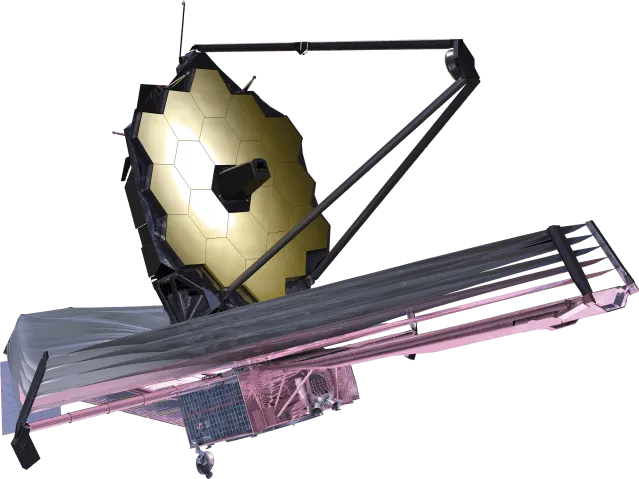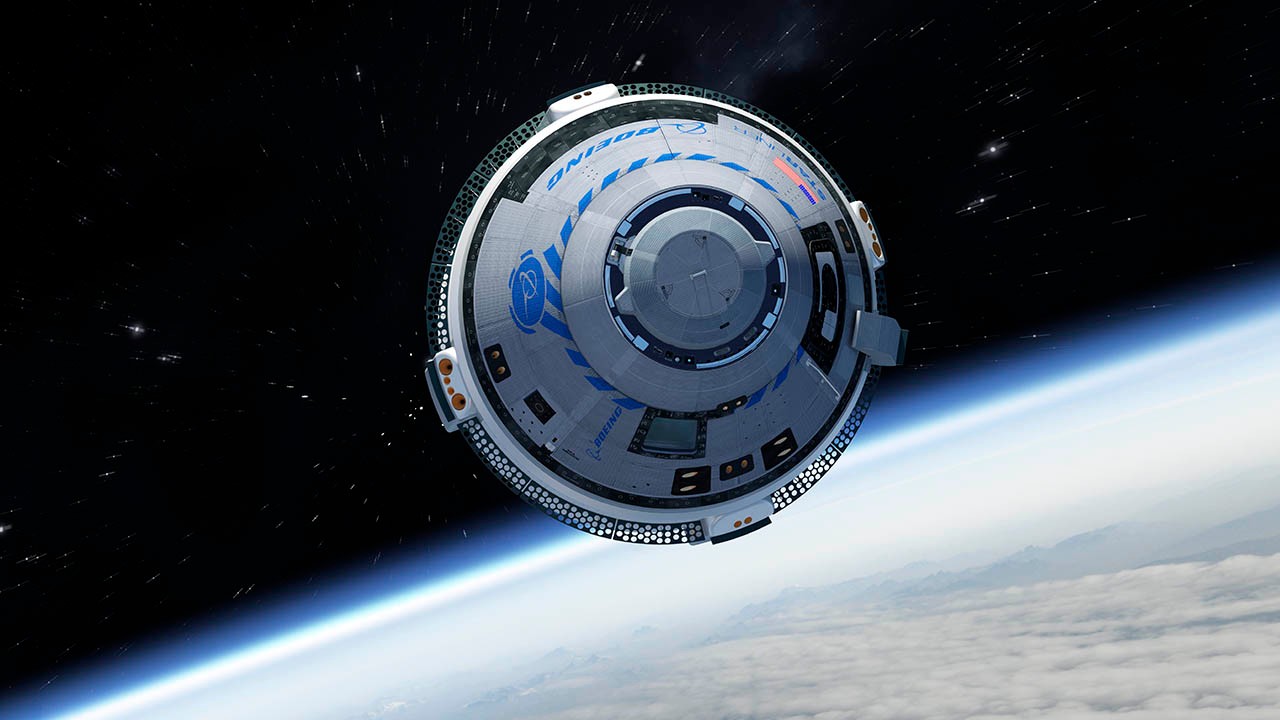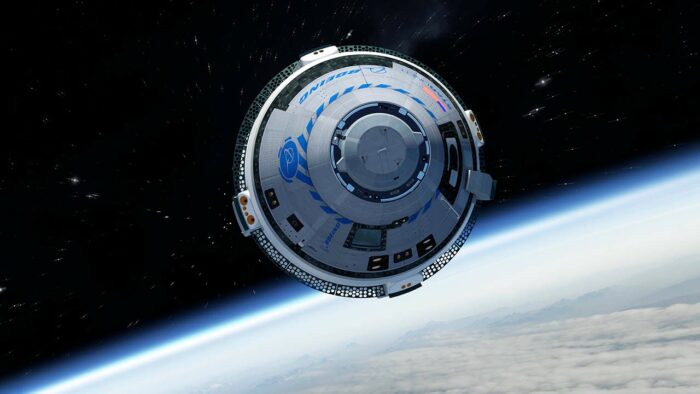by Julia Seibert
Yes, the rockets, glitzy fashions, and David Bowie songs were neat – but the lasting legacy of the 1960s Space Race lies elsewhere. Novel technology and infrastructure brought about by the Race opened the door to a myriad of new ways to explore ourselves and the universe from beyond our planet: space research was born.
Decades later, with the original Race long fizzled out, life would be unthinkable without space research. A vast field with countless contributions, it has allowed us to stare into the cosmic abyss and demand answers regarding our existence, as well as monitor our own planet and make plans on how to leave it. With a new age in spaceflight on the rise, the field is more important than ever and could be the deciding factor regarding not just humanity’s future on Earth, but in space, too.
Table of Contents
ToggleHistory of Space Research
First Space Research Plans
Since space research is defined as research carried out in, well, space, it really only kicked off when space travel became a reality. However, that did not stop humans from planning it for centuries. The origins of space research can be traced back to ancient musings about the stars, such as the early astronomical efforts by the Ancient Greeks. Nicolaus Copernicus, Johannes Kepler, and Galileo Galilei (plus the latter’s telescope) later paved the way by observing planetary motions and advocating for a heliocentric model of the solar system. Isaac Newton took things one step further by contributing, among other things, a law of gravitation and three laws of motion that are still frequently used today.
Some of the first concrete plans to leave Earth came from Russian scientist Konstantin Tsiolkovsky, who (alongside his many proposals for space stations and colonies) derived the infamous rocket equation in 1903. Deceptively simple, it describes the relationship between a rocket’s mass, velocity, and the planet’s gravity. The equation was later derived independently by Robert Goddard (US) and Hermann Oberth (Germany), both of whom went on to publish papers on rocketry. Research pertaining to rocket physics continued to gain ground (primarily in the US, Soviet Union, and Germany), and in 1926, Goddard succeeded in launching the first liquid-fueled rocket. The field of astrophysics was also booming, with Einstein’s 1905 papers proposing special relativity and quantum physics, followed by his 1915 introduction of general relativity. The groundwork was there – now it just needed to be tested.
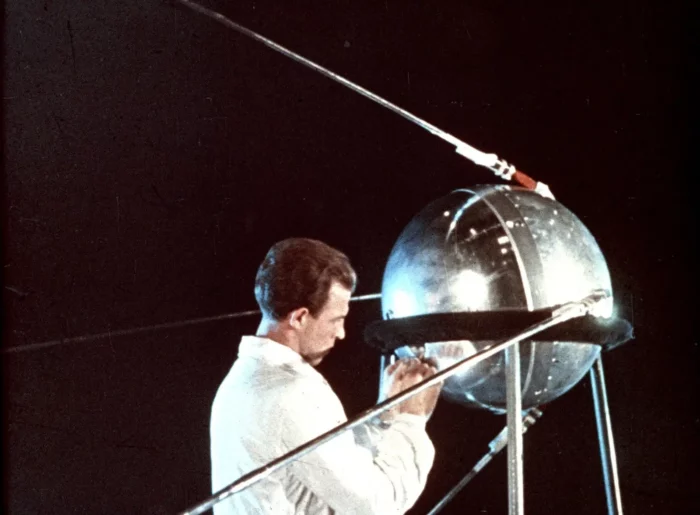
First Space Research Mission
Though Germany reached space first with one of its V-2 missiles in 1944, it was the US adaptation of the rocket that carried the first space research flight – an experiment on cosmic radiation – two years later. The achievement was followed by the US photographing Earth from space, later sending up fruit flies and a rhesus monkey named Albert II. The Soviets, however, notched the first real win of the nascent Space Race with 1957’s Sputnik. Though the mission’s main scientific aim would have been inserting the thing into orbit (and getting one in over the Americans), the satellite also studied the atmosphere and provided information on radio transmissions, pressurization, and orbital tracking. Sputnik and the Space Race also influenced the establishment of NASA in 1958; the agency would become one of the most significant contributors to space research in the decades to come.
Space Research Methods
1. Space Stations
US and Soviet lunar plans may have dwindled following the Space Race, but both players were keen to keep up their presence in Earth’s orbit aboard space stations, which allow research to be conducted by human hand. Smaller-scale efforts – the Soviets’ Salyut program and the US’s Skylab – began during the 1970s and 80s, hosting hundreds of experiments and making great strides for long-duration human space habitation as well as docking and spacewalks. The first modular station, Mir, was launched in 1986. A Soviet (and later Russian) effort, it allowed for much international cooperation and served as fruitful grounds for experimentation. Its successor, the International Space Station (ISS), took over Mir’s scientific and diplomatic duties after the latter’s 2001 de-orbiting. Meanwhile, as US law prohibits NASA’s cooperation with China, the latter independently completed its Tiangong station in 2022. As of 2021, researchers have reportedly put forward 1,000 experiments to conduct aboard it.
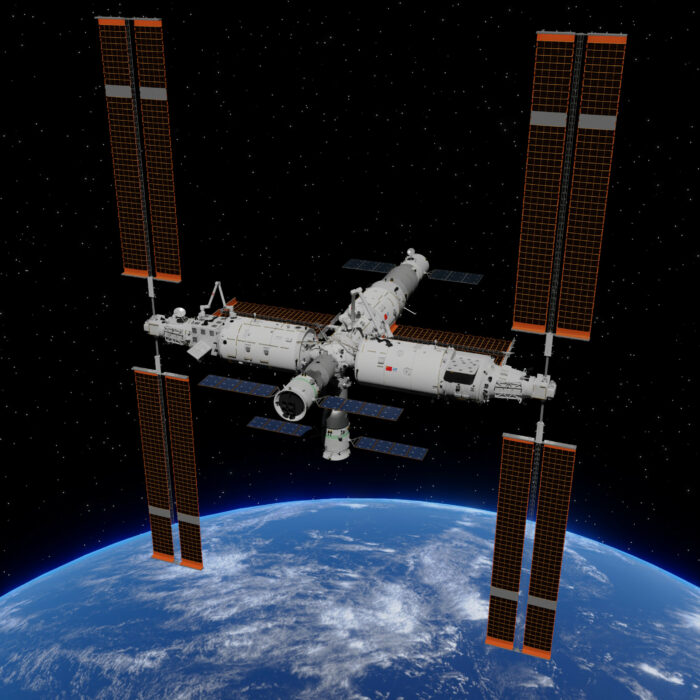
2. Telescopes
With none of Earth’s pesky atmosphere or light pollution interfering with its delicate instruments, orbit or beyond is the best place a telescope can be. NASA got there first with its 1968 Orbiting Astronomical Observatory 2 (OAO-2), collecting data in ultraviolet wavelengths. In the following years (and decades), it was joined by countless more, each tuned to specialize in certain wavelengths of light in order to pick up faint signals from faraway galaxies. Perhaps the most famous telescope is 1990’s Hubble, which captures images in ultraviolet, visible, and near-infrared wavelengths and charms the public with dazzling results. As of 2014, an average of two space telescopes per year were launched since 1970, and roughly 30 are currently in operation.
3. Research Satellites and Space Probes
Telescopes are just one type of satellite built for research purposes. Many others excel at Earth observation, which is vital to reconnaissance efforts as well as meteorology, ecology, and oceanography (to name a few). In addition to images beamed down from orbit, satellites can use radar, laser pulses, microwaves, and atmospheric and gravitational analyses to bolster such fields from space. China’s Dark Matter Particle Explorer (DAMPE) and NASA/ESA’s Solar & Heliospheric Observatory (SOHO), among other missions, show the machines’ proficiency in matters of space science. Also, Earth is not alone in being monitored by satellites; for example, Mars, Jupiter, and Saturn host (or previously hosted) manmade probes in their orbits that take readings and pictures to be sent back to Earthly scientists. These probes, plus non-satellites like the Mars rovers or Voyager spacecraft, can provide much more detailed and specific data on their subjects than Earth-bound machines can.
4. Sounding Rockets
Small, suborbital-sounding rockets may not be able to carry much equipment, but the research they contribute is nonetheless valuable. Having been around since the 1950s, they predate their more complex younger siblings and allow for quick, no-fuss experiments, which often study the atmosphere (since this area is not accessible to orbital satellites). According to NASA, sounding rockets have been used to explore how the aurora borealis occurs as well as Earth’s electrojets. Even the trails left by the little rockets’ launches are used by scientists to monitor atmospheric movements.
Space Research Fields
Astronomy, Astrophysics, and Cosmology
Obviously, a massive field of space research involves exploring space itself. The subject is seemingly infinitely diversified, with countless avenues to focus on. The three most prominent are astronomy (the study of celestial objects and their properties), astrophysics (focuses on the physics and chemistry of astronomical phenomena), and cosmology (deals with the structure and timeline of the universe as a whole), though these are closely interrelated and can overlap. Another adjacent field is astrobiology, which studies the origin, distribution, and future of life in the universe. Space research in these subfields often (but not always) uses data obtained from telescopes in orbit.
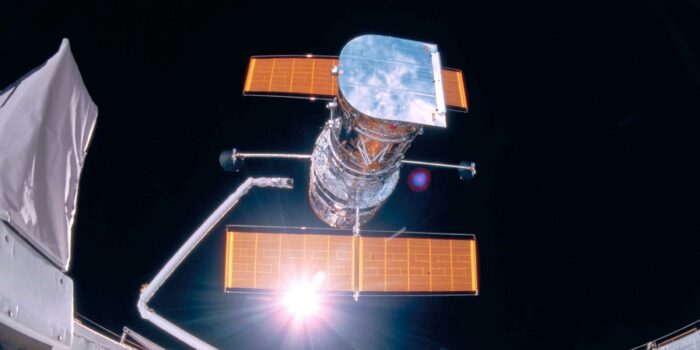
The Hubble space telescope, for instance, helped map the structure of mysterious dark matter, provided data pertaining to the age of the universe, and contributed to scientists determining that supermassive black holes lurk at the hearts of large galaxies. These days, the James Webb telescope continuously blows scientists’ minds with its data from the early universe and its spectroscopic analyses of distant exoplanet atmospheres. Telescopes are not the only tool used for astronomical space research, however. For example, the first black hole was discovered via sensors aboard a sounding rocket, not to mention space probes like the Voyagers, Martian rovers, and Cassini-Huygens, which can get an even better look at nearby processes.
Physics
In addition to studying astronomical objects, space research can also be used to better understand the fundamentals of physics itself. For example, NASA’s Cold Atom Laboratory aboard the ISS uses lasers to ‘less than a degree above absolute zero’, where they form Bose-Einstein Condensate (BEC): a fifth state of matter whose formation is aided by microgravity. This way, the processes of quantum mechanics become visible macroscopically (as opposed to atomically), making them easier to study. Plasma physics also benefits from the orbiting lab; the Plasma Kristall experiment, conducted on the ISS, allows astronauts to observe plasma crystals resulting from excitation of particles in plasma, which would not be possible under the influence of Earth’s gravity. Adjacently, observations of astronomical phenomena can underline or refute claims made in theoretical physics. Einstein’s relativity, for example, is proven right time and time again by astronomical observations of gravitational lensing and gravitational waves.
Earth Observation
Flipping the focus back to Earth, satellites in our planet’s orbit have a great perspective on goings-on down here. The field of Earth observation is quite broad, and might involve espionage or reconnaissance; satellites cannot just snap images from orbit but can intercept signals such as cellphone conversations, too. In terms of scientific research, however, the focus is on Earth’s natural environment and (more often than not) human impact on it. NASA boasts an especially diverse fleet, its satellites (and ISS instruments) monitoring everything from cloud density to agriculture to ocean patterns to urban growth (and much more).
ESA, another Earth observation specialist, compiles much of this data as part of its Climate Change Initiative (CCI), which has contributed to hundreds of peer-reviewed studies. With such a treasure trove of data, scientists can track weather, natural disasters, and global trends as they relate to climate change. The latter topic is where Earth observation research really shines, providing accurate data on CO2 levels and methane emissions. In combination with other satellite data, such as ocean levels and crop health, these allow scientists to not only keep an eye on climate change, but create warnings, predictions, and suggestions, too. ‘The ability to observe, which can ultimately lead to the ability to predict, is really what prepares us for hazards and helps us mitigate the disasters that they can lead to,’ said Karen St. Germain, director of NASA’s Earth Science division, as reported by Politico.
Life Sciences
If that is not close enough to home yet, the space research field of life sciences might well be. As its name suggests, it occupies itself with the effects of space – like radiation and differing levels of gravity – on life, be it plants, animals, or humans. Our Earth-tethered bodies have simply not yet evolved to life beyond our planet, but thanks to the ultimate guinea pigs – astronauts – scientists can already tell where they fall short. Microgravity aboard the ISS has been shown to decrease bone density and muscle mass (if astronauts do not exercise), also causing fluids to shift into astronauts’ heads, and causing vision problems. Issues with orientation and coordination are also common – and then there are all the other effects to think about.
Radiation, which can come from the sun, Earth’s magnetic field, and deep space (cosmic rays), can cause cancer and other decidedly unappealing diseases in an environment without much medical help. Even the ISS, which does not venture beyond Earth’s orbit, cannot shield astronauts from the equivalent of 50-6,000 chest X-rays. There is also the complex psychological aspect, as astronauts are constantly faced with isolation, disturbed circadian rhythms, fatigue, and confinement. Previous and ongoing research both in space and on Earth seeks to provide insights on how this can be dealt with, especially considering a future with longer, more ambitious missions. Space gardening, for example, has been suggested by NASA as a way for astronauts to cope with psychological stress, which is handy considering that astronauts will have to grow plants in space for food on long trips and colonies.
Materials Sciences
Materials sciences is where things take a turn for the sci-fi. It involves studying the environment of space on – surprise – materials and can have several implications for a future in space. Much of it has to do with building rockets and spacecraft, and determining (and testing) how certain materials will behave in the hostile environment of space. However, microgravity (along with other factors including a vacuum and extreme temperature ranges) might lend itself particularly well to manufacturing certain products. In the pharmaceutical industry, for example, companies have long been sending experiments to space to observe how neatly the chemicals arrange themselves without gravity weighing them down. Manufacturing of other products like semiconductors or certain alloys also stand to benefit from the environment; several companies, including Wales-based Space Forge, are already developing such technologies.
A somewhat crazier prospect is the concept of 3D-printing organs and tissue in space in a process known as bioprinting. Aboard the ISS, bioprinting with the Bio Fabrication Facility (BFF) is already well underway, taking advantage of the microgravity environment since Earth’s powerful gravity weighs down the delicate, freshly printed tissue. This could have significant implications for both Earthly and cosmic life, providing support to astronauts too far away for fresh meat – or organs.
Why is Space Research So Important?
Space research allows us to peer beyond the constraints of our world and gain unique perspectives unattainable through other methods. What exactly this looks like depends on the subfield. Astronomy and its sister subjects can tell us where we came from and what our place is in the universe; it has profound implications, reminding us how unimportant yet rare we are. Space research can help us understand the fundamental forces that reign our universe outside of the testing environment of Earth, which teems with interfering variables. The field also teaches us about our own bodies and how our feeble biology might react to ambitious plans of colonizing space. Finally, it might give way to entirely new industries based on space and its industrialization, which can further spur efforts regarding exploration and colonization. Most pressingly, however, observing Earth from space helps us keep an eye on the planet’s health and look at climate change as both a local and global phenomenon, which in turn helps prepare us for disasters and learn how to avoid them.
Most Prominent Space Research Institutes
Due to the large-scale efforts and resources needed to undertake such ambitious projects, many prominent space research institutes are governmental agencies. NASA is one example, consisting of a handful of facilities spread across the US. One of these is the Jet Propulsion Laboratory (JPL), funded by NASA and managed by Caltech, which focuses on (robotic) spacecraft development both in deep space and closer to Earth and is also in charge of the Deep Space Network communications system. Ames, another NASA center, specializes in astrobiology and life science, as well as Earth observation. The European Space Agency (ESA) is also a prominent institute, contributing to telescopes and missions such as Hubble, Webb, and the Huygens probe that rode alongside Cassini. Despite its relative isolation, China National Space Agency (CNSA) has several notches under its belt, including landing on the far side of the moon, bringing material back from the lunar surface, and placing a rover on Mars. Russia’s agency Roscosmos is heavily involved in the ISS, having supplied some of its modules and technologies, and frequently flies its astronauts to perform experiments and outreach aboard it.
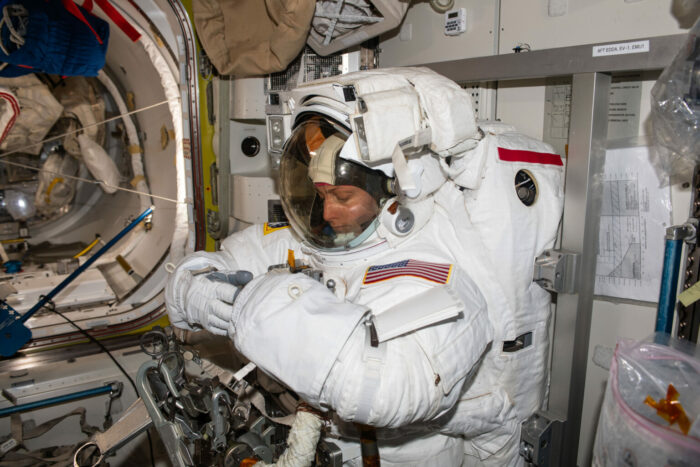
Aside from the government, some universities with distinguished space departments also conduct research in the field. These might include the Center for Astrophysics | Harvard & Smithsonian, Caltech, and MIT; in fact, these institutions recently published a study describing the first observation of a star engulfing a planet. Surrey Space Center of the University of Surrey, UK, is another prominent institution that researches propulsion and astrodynamics (among other things), also contributing to many space missions. Indian Institute of Space Science and Technology (IIST), a university meant to boost India’s space program, produces much research on anything from physics to aerospace to humanities to Earth science, all revolving around the subject of space.
Challenges and Opportunities in Space Exploration on Earth
Our planet really throws a wrench into many avenues of space exploration. Its atmosphere and light pollution block or refract much of the radiation coming from space, which makes it difficult for sensitive telescopes to catch weak glimpses of light from distant stars. Since X-rays and gamma rays are completely blocked out by the atmosphere, these signals would be impossible to catch were it not for instruments in space. The same goes for missions looking to take measurements of cosmic rays, which our atmosphere protects us from. Even orbital telescopes like Hubble encounter a fair bit of interfering radiation from Earth, which is why the James Webb Space Telescope (whose mission is to collect the faintest light from the early universe) sits much further out.
Gravity is another important factor. For topics like physics and life/material sciences, the effect of gravity or lack thereof simply cannot be investigated from Earth, save for a few seconds-long weightless stints aboard the Vomit Comet. This means that longer processes such as pharmaceutical experiments or bioprinting would be impossible were it not for permanent space stations. Similarly, studying the effects of microgravity and radiation on humans or plants cannot be done from Earth.
Read also: Is It Smart to Invest in Space Exploration Stocks?
What We Learned So Far from Space Research
Without the breakthroughs made by space research, too plentiful to list here, we may still be stuck with many of the scientific worldviews held in the 1950s. The field has shown us some of the deepest wonders of the universe and helps us understand our place within it. It has proven right (and thrown into question) beliefs about physics beyond the constraints of Earth. Satellites not only connect our world (a process gleaned from testing in space) but have proven themselves an invaluable tool for keeping track of and fighting every aspect of climate change. Then there are the countless technologies and methods that occurred as byproducts of space research but improve life on Earth; solar panels, cochlear implants, and certain cancer research are all on the list. Space research has also given us the building blocks to start exploring the solar system – and staying there – by showing us how our own bodies and brains work away from home, plus the materials needed to sustain them. However, with all that the field has already taught us, it continuously shows just how much we do not know – yet.
In another sense, space research lays bare an enigma between our thirst for knowledge and what it teaches us. The study of space forces us to stare into the face of our insignificance while beguiling us with the secrets held within it, which we are unable to resist pursuing. Our evergreen desire to learn wins out, even though research stemming from this desire has shown us that the sun will engulf the Earth, the universe will die, and every hint of our existence will one day be lost to the very physics we study. In the meantime, though, we have work to do. It might take us centuries or millennia to comprehend the mysteries of the universe, or we may never get there at all. All we can do is try.
If you found this article to be informative, you can explore more current space news, exclusives, interviews, and podcasts here.
Featured image: James Webb Space Telescope. Credit: NASA
Share this article:
